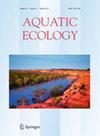Microalgae are increasingly recognized for their potential in renewable energy, nutrition, and wastewater treatment applications. In this study, the effects of salinity on the growth and productivity of two microalgal species were examined, with a focus on their responses to salinity variations ranging from 0 to 10 g l−1. A novel aspect of this research is the employment of salinity as the sole limiting factor in kinetic growth models, a less conventional approach that has been found to effectively delineate the growth patterns of both species. This method allows for the exploration of alternative substrates beyond the commonly used nutrients and light, thus enhancing the understanding of the diverse factors influencing microalgal growth. It was observed that salinity levels above 2 g l−1 inhibited the growth of Chlorella vulgaris Beijerinck 1890, indicating a preference for freshwater and low salinity conditions. In contrast, resilience to salinity up to 5 g l−1 was demonstrated by Desmodesmus communis (E.Hegewald) E.Hegewald 2000, suggesting its suitability for cultivation in brackish or moderately saline conditions. Despite some reports of high salinity tolerance in C. vulgaris, variability in halotolerance among different strains was revealed by this research, highlighting the importance of meticulous strain selection. The modified Richards model was identified as the most appropriate kinetic model for both species. These findings underline the necessity for species-specific models to accurately predict microalgal growth under saline conditions, contributing to a better understanding of microalgal salinity tolerance and aiding in the optimization of strain selection and cultivation for diverse applications, including saline wastewater treatment.


